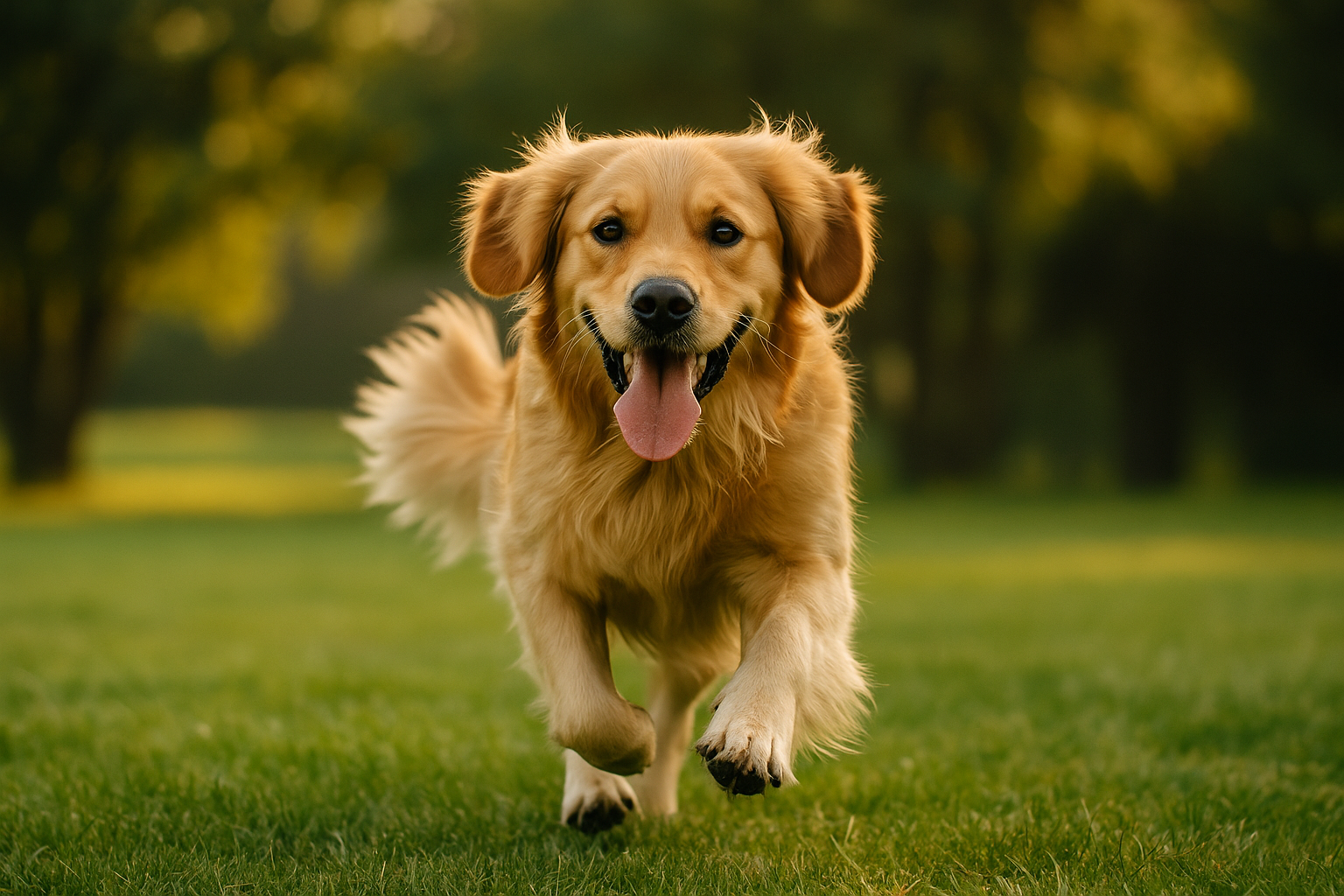Golden Retrievers are high-energy, intelligent dogs that thrive on movement, play, and stimulation. But how much exercise is truly enough to keep them healthy and well-behaved—and how do you balance activity with age, lifestyle, and safety?
In this guide, we’ll cover how much daily activity a Golden Retriever needs at different life stages, the best types of exercise, and how to avoid overdoing it. Whether you have a playful puppy or a wise senior, this article will help you build a smart exercise routine your Golden will love.
Why Exercise Is So Important for Golden Retrievers
Golden Retrievers were originally bred as working dogs for retrieving game in the field. That means they were designed to be physically active, mentally alert, and responsive to commands—all traits that require regular engagement.
Without proper exercise, your Golden Retriever may experience:
- Weight gain or obesity
- Boredom-related behaviors (chewing, digging, barking)
- Anxiety or restlessness
- Destructive tendencies
- Shortened lifespan or joint problems
Daily exercise doesn’t just burn energy—it also improves your dog’s mood, behavior, and health.
Daily Exercise Guidelines by Age
Puppy (8 weeks to 1 year)
Golden Retriever puppies have bursts of energy, but their bones and joints are still developing.
General rule: 5 minutes of exercise per month of age, up to twice per day.
For example:
- A 4-month-old puppy: 20 minutes x 2 = 40 minutes total per day
Safe activities for puppies:
- Short, slow walks
- Gentle play in the yard
- Puppy training sessions
- Light games of fetch (no high jumping)
- Socializing with other dogs
Avoid: long hikes, jogging, or intense running to protect growing joints.
Adult (1 to 7 years)
Adult Golden Retrievers are at peak energy and need at least 1 to 2 hours of physical activity per day.
Great options:
- Long walks or jogs
- Off-leash running in secure areas
- Swimming
- Agility or obedience training
- Fetch, tug, scent games
- Hiking
If your Golden seems hyper or destructive, increase activity or add more mental enrichment.
Senior (7+ years)
Older Goldens may slow down, but they still need movement to maintain muscle tone and prevent weight gain.
Recommended: 30 to 60 minutes per day, depending on health.
Gentle activities:
- Leisurely walks
- Swimming (great for joint relief)
- Light fetch
- Puzzle toys and nose work
Always monitor for signs of discomfort, and adjust pace as needed.
The Best Types of Exercise for Golden Retrievers
1. Walking
A staple for every dog. Try to walk your Golden at least twice a day for 30 minutes each time. Vary routes to keep things interesting.
2. Fetch
Simple, effective, and fun. Use a ball launcher or frisbee in a safe, open space. Most Goldens love the chase and return instinctively.
3. Swimming
Low-impact and highly effective. Perfect for dogs with joint problems or during hot weather.
4. Hiking
Great for building endurance and mental stimulation. Bring water, keep your dog leashed, and be mindful of terrain and wildlife.
5. Agility or Obstacle Courses
Set up a course in your backyard or attend a training center. It sharpens focus, improves coordination, and builds confidence.
6. Tug-of-War
Engages muscles and fulfills play drive. Be sure to teach proper rules like “drop it” and “easy.”
7. Nose Work or Scent Games
Hiding treats or toys engages your Golden’s mind and body, making it great for rainy days or limited spaces.
Mental Stimulation Is Exercise Too
Don’t forget that mental work tires dogs out just like physical play. Combine both for a complete routine.
Ideas for mental enrichment:
- Puzzle feeders
- Obedience training
- Trick training
- Hide and seek
- Scent-based games
- Food-dispensing toys
A mentally tired dog is a calm and happy dog.
Signs Your Golden Is Getting the Right Amount of Exercise
Good signs:
- Calmness at home
- Healthy weight
- Strong muscles
- Restful sleep
- Good behavior (less chewing, barking, or pacing)
Signs of under-exercise:
- Hyperactivity
- Destructive behavior
- Weight gain
- Restlessness or anxiety
- Barking for attention
Signs of over-exercise:
- Limping
- Reluctance to move
- Excessive panting
- Sore joints or stiffness
Always adapt your routine to your dog’s energy, age, and health condition.
Exercise Tips by Season
In Summer:
- Exercise early morning or evening to avoid heat
- Provide shade and fresh water
- Avoid hot pavement
- Choose swimming over running
In Winter:
- Protect paws from ice and salt
- Use a dog coat if needed
- Keep walks shorter but more frequent
- Play fetch indoors or in a garage
Final Thoughts: Balance Is Key
Golden Retrievers thrive when they’re active and engaged, but every dog has a unique threshold for exercise. Pay attention to your Golden’s age, energy level, and body language—and build a routine that balances physical movement with mental challenge.
With consistent, thoughtful activity, your Golden will not only behave better but also enjoy a longer, healthier, and more fulfilling life by your side.

